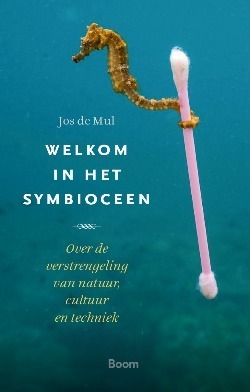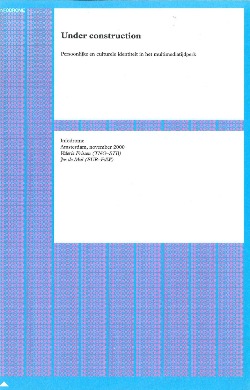Jos de Mul. Leben erfaßt hier Leben: Dilthey as a philosopher of (the) life (sciences). In: Eric Nelson (ed.). Interpreting Dilthey. Cambridge University Press, 2019, 41-60.
Eric Nelson (ed.). Interpreting Dilthey.
In this wide-ranging and authoritative volume, leading scholars engage with the philosophy and writings of Wilhelm Dilthey, a key figure in nineteenth-century thought. Their chapters cover his innovative philosophical strategies and explore how they can be understood in relation to their historical situation, as well as presenting incisive interpretations of Dilthey's arguments, including their development, their content, and their influence on later thought. A key focus is on how Dilthey's work remains relevant to current debates around art and literature, the biographical and autobiographical self, knowledge, language, science, culture, history, society, and psychology and the embodied mind. The volume will be important for researchers in hermeneutics, aesthetics, practical philosophy, and the history of German philosophy, providing a valuable introduction to Dilthey's work as well as detailed critical analysis of its ongoing significance.
Contents
Acknowledgments
Introduction: Wilhelm Dilthey in Context Eric S. Nelson
Part I Life, Hermeneutics, and Science
1 Dilthey’s Conception of Purposiveness: Its Kantian Basis and Hermeneutical Function Rudolf A. Makkreel
2 Leben erfaßt hier Leben: Dilthey as a Philosopher of (the) Life (Sciences) Jos de Mul
3 Dilthey’s Importance for Hermeneutics Michael N. Forster
4 Hermeneutics and Historicity: Dilthey’s Critique of Historical Reason Charles Bambach
5 Dilthey’s Defense of Historicism Frederick C. Beiser
6 More Than One ‘Kind’ of Science? Implications of Dilthey’s Hermeneutics for Science Studies Robert C. Scharff
Part II Practical Philosophy, Aesthetics, and Interpretation
7 Dilthey and Empathy Shaun Gallagher
8 Dilthey’s Ethical Theory Benjamin Crowe
9 Dilthey’s Dream and the Struggle of World-Views Nicolas de Warren
10 A Task Most Pressing: Dilthey’s Philosophy of the Novel and His Rewriting of Modern Aesthetics Kristin Gjesdal
11 Experience and Metaphysics: The Anti-Hegelian Aesthetics of Dilthey and Santayana Paul Guyer
12 Dilthey and Wittgenstein: Understanding Understanding Lee Braver
13 Dilthey’s Hermeneutics and Philosophical Hermeneutics Jean Grondin
Bibliography
Index
Leben erfaßt hier Leben: Dilthey as a philosopher of (the) life sciences
Abstract
Ever since the publication of the Introduction to the Human Sciences (1883), the name of Dilthey has been strongly associated with the distinction, if not dichotomy, between the natural sciences (Naturwissenschaften) and the human sciences (Geisteswissenschaften), and between their respective approach of their object: causal explanation (Erklären) versus hermeneutic understanding (Verstehen).
Given the attention Dilthey pays in his demarcative project to the opposition between the natural and human sciences, this impression is understandable. However, when we study Dilthey’s writings more closely, the situation turns out to be more nuanced and more complicated. In the Introduction to the Human Sciences, for example, Dilthey argues that causal explanations are not restricted to the natural sciences, but play an important role in the human sciences as well. Moreover, Dilthey does not always restrict himself to the aforementioned binary distinction between natural and human sciences. In an appendix ofThe Rise ofHermeneutics (1900), he distinguishes a third class of sciences in-between the natural sciences and human sciences. This class of biological sciences (biologische Wissenschaften) focuses on phenomena that are characterized by an internal teleology of life (Lebenszweckmäßigkeit), and are in need of a functional explanation.
Given the fact that “life” is one of the key concepts in Dilthey’s philosophy – not without reason Dilthey is often considered to be one of the main representatives ofthe so-called philosophy oflife (Lebensphilosophie) – the question arises of how Dilthey’s concept of life relates to this third class ofbiological sciences. Although in Dilthey’s later, post-1900 writings, such as The Formation of the Historical World in the Human Sciences (1910), life is primarily understood as a “psycho-historical” or “historicospiritual” (geistig-geschichtlichen)1 phenomenon, and as such object of the human sciences, in the Introduction to the Human Sciences, and even stronger in his ontological works of the so-called middle period (1883–1900), in which he introduced the aforementioned tripartite division of the sciences, Dilthey often uses the word “life” in a biological sense, referring to the active interaction between the (human) organism and its environment.
In my contribution to this volume, I l analyze the role Dilthey ascribes to biology in his foundation of the human sciences and discuss how the elaboration of this “biological standpoint” in the writings of the middle period is connected with an important change in the meaning of Dilthey’s concept of life.
In the first section I will give a short overview of the changing position of biology vis-à-vis the human sciences from the Introduction to the Human Sciences to The Rise ofHermeneutics. In
the second section, I will argue that Dilthey’s naturalistic revision of Kant’s subjectivist notion of purposiveness (Zweckmäßigkeit) in the works ofthe middle period, was one ofthe main reasons for this change, resulting in a notion of an “immanent purposiveness of organic life.” This naturalization of the concept of purposiveness, which was a fundamental part of his “Progression Beyond Kant” (Fortgang u¨ber Kant) (GS 8: 174), makes him a precursor ofthe so-called 4E movement in biology and the cognitive sciences, which is characterized by a “naturalization ofphenomenology,” as we find it, for example, in Evan Thompson’s(2007) Mind in Life: Biology, Phenomenology, and the Sciences ofMind.
In the third section, I will underpin my claim that already in Dilthey’s philosophy of life, just like in the contemporary “4E movement” (of which Thompson is one of the founders), cognition is comprehended as embodied, embedded, enacted and extended. Just as in the case of Thompson, Dilthey defends a nonreductionist naturalism in which the mind emerges from life. For both Dilthey and Thompson, the study of life and mind require a close cooperation between the natural sciences, the life sciences and the humanities, respectively resting on a third-person, a second-person and a first-person perspective.
In conclusion I will argue that Dilthey’s philosophy of life and mind is not only interesting from a historical perspective, but contains many fruitful elements for the present discussion on human cognition, because the final focus in his work is a third realm ofhuman life beyond biological life and the individual psyche: the historical world of meaningful cultural expressions.










